Where is the line drawn in the art world?
What should we consider fine art?
What should we consider art?
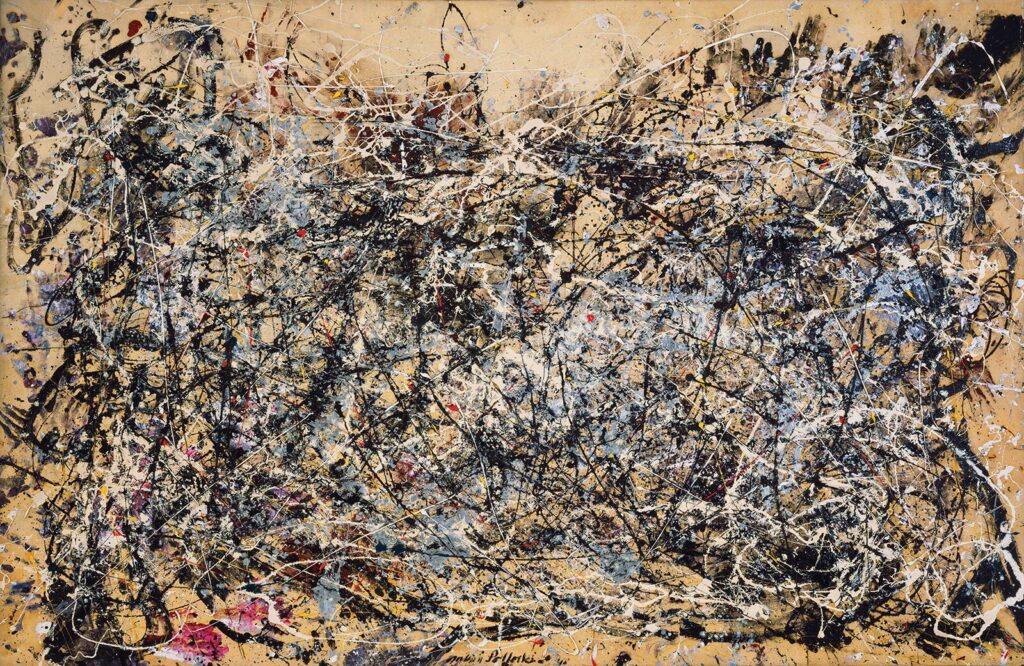
Jackson Pollock challenged all of these questions, as his art was critiqued heavily throughout his lifetime and even afterwards.
I agree with the critics. His art is trash.
Paul Jackson Pollock was alive from January 28, 1912 – August 11, 1956. He was a leading artist in the abstract expressionist movement. He would move around the west throughout his childhood, eventually landing in Los Angeles, California, where he
attended Manual Arts High School. From there, he would enroll in the Art Students League in New York, New York, where he studied life drawing, painting, and composition. Much of his famed work was created in the latter ten years of his life.
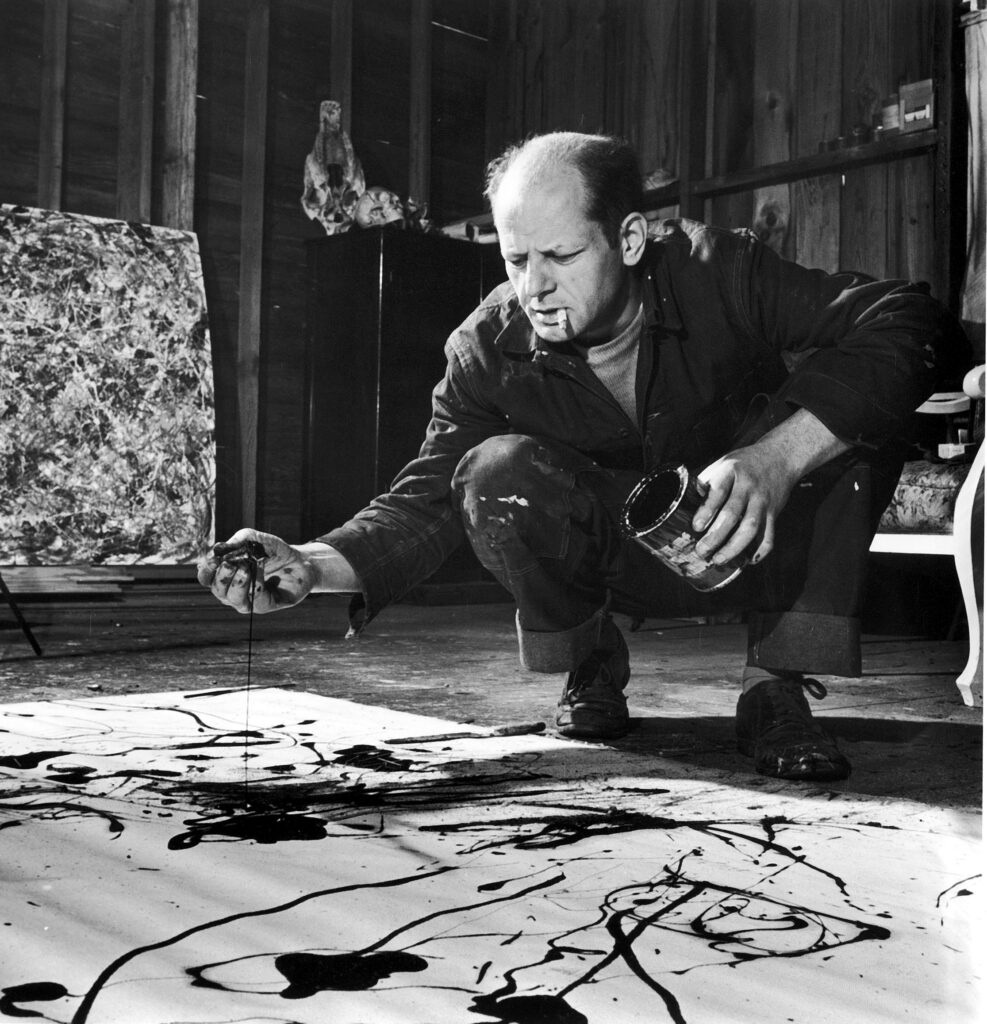
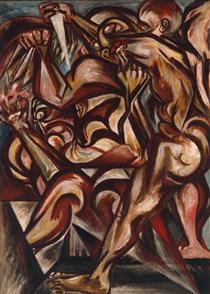
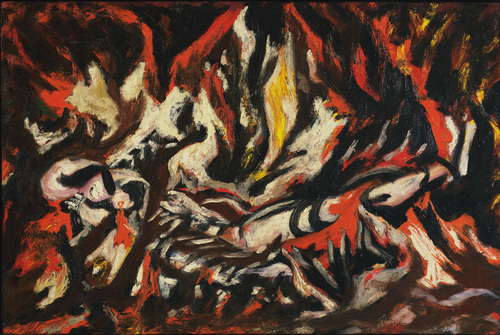
Pollock’s work from art school until his start in “pouring” was compositionally executed and thought through, showing heavy influence from Picasso. His broad, heavy painting style is still prevalent in these works, but their meaning is able to be analyzed. We see mostly clear figures and emotion, often with a thought out color palette and theme.
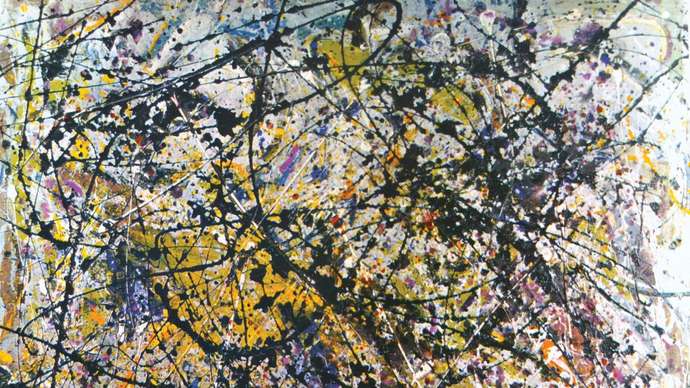
To me, Pollock became a lazy artist. His old ways of compositional analysis and color were thrown out the window when he found a new method, which was overall well received from the public. Artists evolve, for better or for worse, and while Pollock’s evolution would discretely utilize some of his old ways, it would also completely change them.
But why should his art be critiqued so harshly?
Other painters in the abstract expressionist movement, such as Willem de Kooning and Franz Klein have more depth and meaning to their work, as shown below. When Pollock’s work is compared to theirs, it feels cluttered and messy, as there is nowhere for the eye to truly rest and analyze the piece.
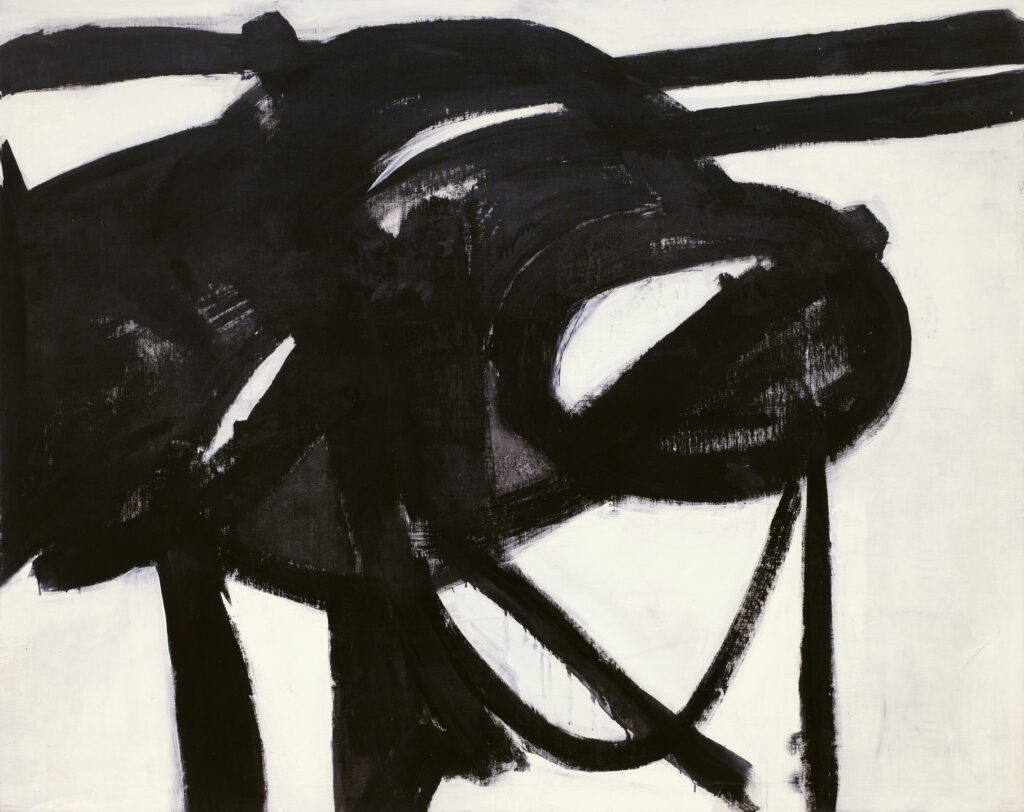
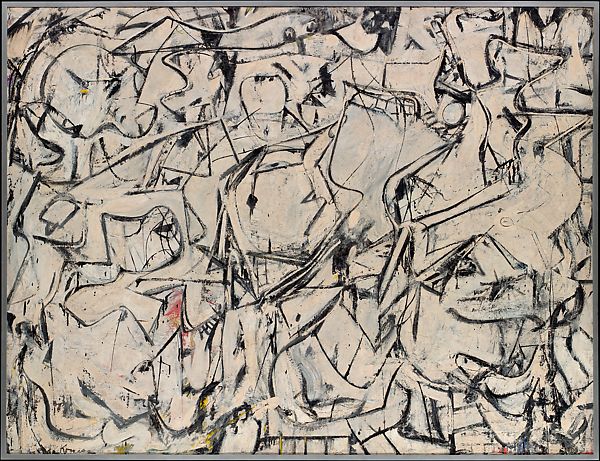
Chief is a bold piece, using exclusively broad black brush strokes on an off-white canvas. The imagery can be interpreted in many different ways, but is drawn from the enlargement of a picture of a chair, so zoomed in that we don’t see the whole thing or can even place it.
When I first looked at it, with the context of the title, I saw a man bent over and motifs of a large headpiece, almost one that a chief would wear.
Compared to Klien, de Kooning has far more going on in his piece, but with his use of lines and negative space the eye moves throughout the composition. The touches of the primary colors also add points of visual interest.
I see the influence of Picasso in this piece, between the touches of colors and abstract shapes. The shapes are at the right middle ground of organic and mechanical to be seen as figures.
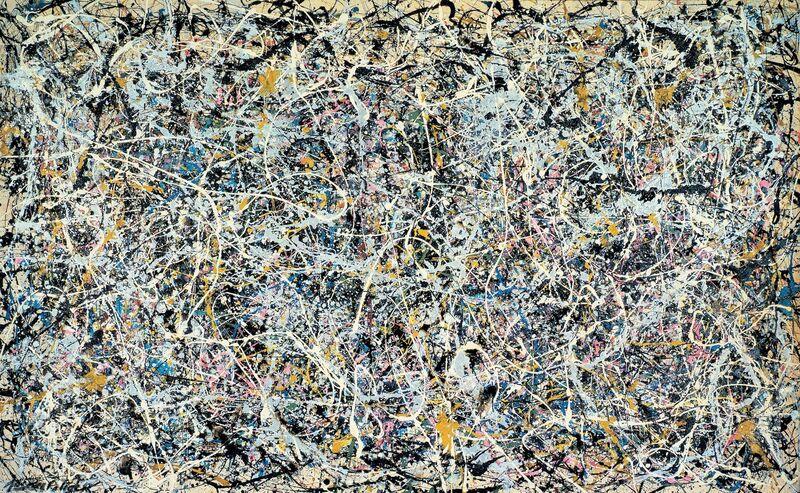
What I do respect about Pollock is his artistic process. He starts with a flat composition and then uses his “pouring” technique to reinvent the image, alternating between composition building and pouring in order to create the final product.
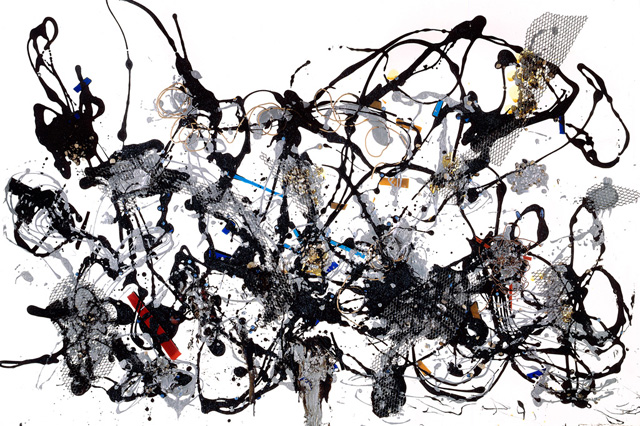
These works were created quickly, as we can see by their numbered titles, and he would create dozens of them in the years before his early death.
While I don’t believe that the value of art should be placed in time spent on the work, I do believe that composition takes thought and patience to create. The cluttered colors and sloppy lines Pollock works with do not show intent and care, but rather give the illusion of a rushed process and poor composition.
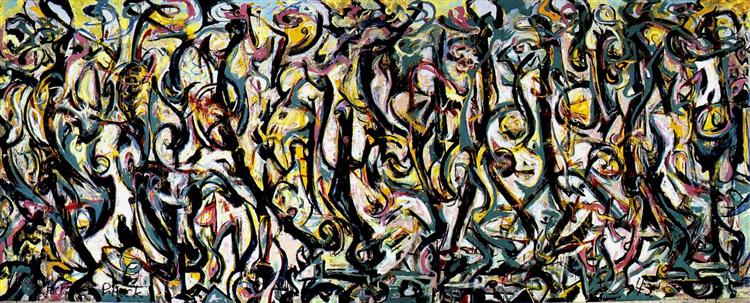
Fine art is defined as “art concerned primarily with the creation of beautiful objects — usually used in plural” by Merriam Webster. Fine art is not created for aesthetic purposes, but rather has deeper meaning to it. There is an idea behind a piece, which is then enhanced through skill and process.
While Pollock did indeed have a process to his work, the thoughts behind it and the inspiration and creativity lack after a few pieces. It is clear that Pollock struck a gold mine in the people’s interests of the time and ran with this new technique, selling it as being more than cheap restaurant wall art.
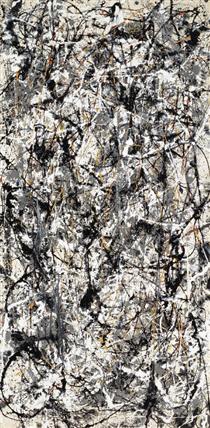
Pollock knew what he was doing for sure. We can see confidence and drive in the work he created, but as his life went on and he became weaker, so did his skill and composition.
Jackson Pollock was once a great artist, but his art is not meant to be revered.
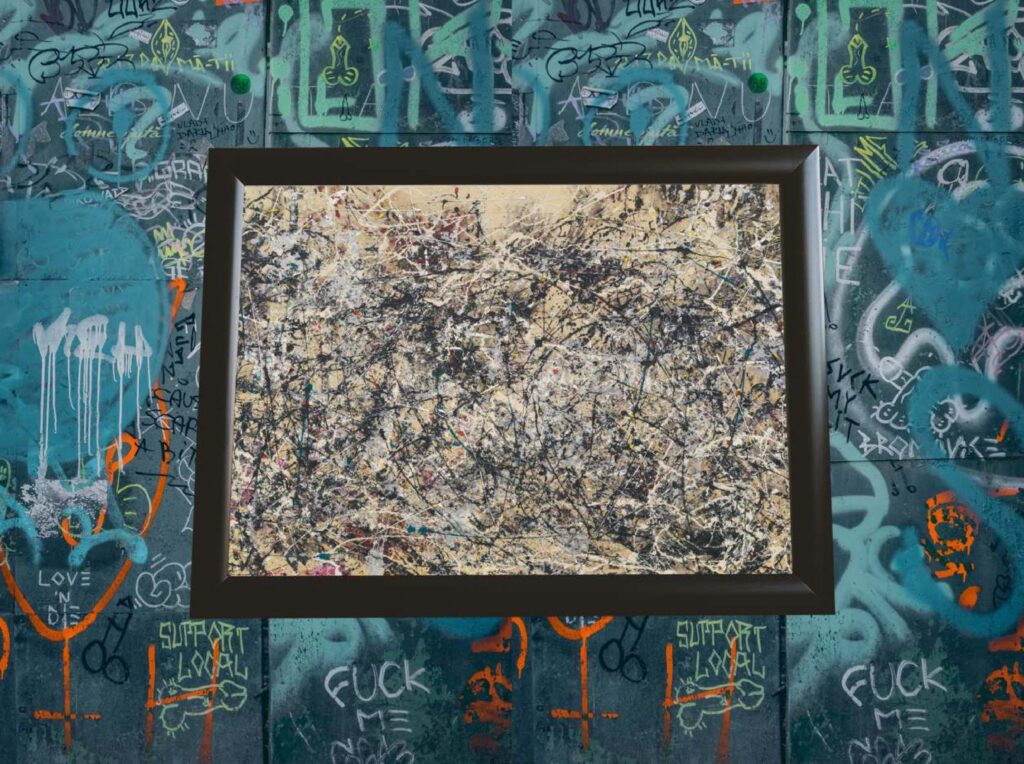
Citations
https://www.theguardian.com/artanddesign/artblog/2008/feb/19/pollockgeniusorcharlatan
https://www.britannica.com/biography/Jackson-Pollock/Poured-works
https://www.metmuseum.org/art/collection/search/482491
https://www.moma.org/learn/moma_learning/franz-kline-chief-1950/
